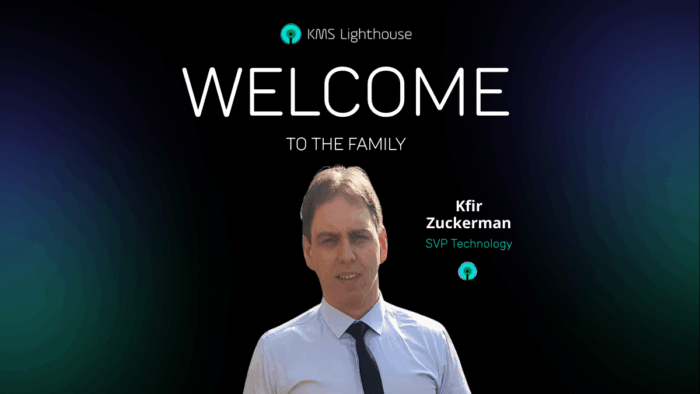For nearly 20 years businesses have relied on Microsoft’s SharePoint to manage and store documents. Because it can be used to capture and share information, companies have attempted to use the tool as a knowledge management system.
Dig a little deeper, though, and you’ll find it may not have all the features or capabilities you’d hoped for in knowledge management. Why? Because SharePoint is more a document management solution which means it has considerable drawbacks for organizations that want to give their employees the best tool for collaboration and communication.
Many people ask us why they should choose KMS Lighthouse over SharePoint and our answer is simple: Lighthouse is better at helping customers and employees quickly resolve questions and issues. Here’s how.
Two of the most popular types of knowledge management systems are open source knowledge base tools, synonymous with homegrown solutions, and cloud-based software solutions like KMS Lighthouse, a digitized knowledge-sharing platform that continuously evolves as an organization scales and changes.
KMS Lighthouse understands how important it is to choose a knowledge-base solution that fits your organization’s needs. But how do you decide if open-source knowledge management software or SaaS, or cloud-based solution is the way to go? Here are some key factors to consider:
Knowledge Management vs. Document Management
It’s understandably tempting for enterprises to use SharePoint for knowledge management. The perception is that it offers unmatched integration with Microsoft Office, the productivity suite that more than 80% of U.S. organizations have installed and now use. But while it’s true the software easily integrates with other programs within the Microsoft Suite, is highly customizable, and enables multiple users to work on the same document at once, SharePoint is not a true knowledge base.
We’ve talked about the difference between document and knowledge management before, but it’s worth repeating there’s an important distinction to be made when deciding between knowledge management solutions.
- Document or content management tools function as a repository for company, product, and service information. Their purpose is to manage projects, web pages and sites, and various types of documents. A one-dimensional solution, they offer little in the way of scalability and user adoption.
- Knowledge management is a multi-dimensional solution that can be used to search for, capture, update, and maintain relevant data all in a single platform. Because information can be updated or curated in real-time, collaboration and communication between employees is enhanced.
Choosing a dedicated knowledge management system that seamlessly integrates with tools your organization already has in place is essential to improving productivity, agility, and innovation.
SharePoint vs. KMS Lighthouse Knowledge Base Software
Document management is by far SharePoint’s greatest strength. It works for all sorts of tasks like viewing and tracking document changes, managing document security and permissions, searching vast document libraries, and scanning and capturing that enables going paperless.
What are SharePoint’s weaknesses? The most critical deficiency is that successful implementations that ensure consistent structure across knowledge articles are dependent on in-house developments teams or customization outsourcing. Others include:
- Inefficient search capabilities due to poor document planning and file structures.
- Lack of flexibility without development or third-party knowledge base software.
- Setup is complicated and multiple controls are needed to perform even the simplest of tasks. This requires extensive employee training to get the most out of the system.
Finally, upgrading SharePoint is complex with custom developments and custom development often required. New features need to be planned and developed by each organization
What Sets KMS Lighthouse Apart
Put succinctly, SharePoint does not help find documents. Lighthouse helps find answers. But there’s much more that explains why KMS Lighthouse’s knowledge management portal holds the upper hand:
- It’s off-the-shelf and requires zero coding, requires no technical skills to use, and no employee training is needed. The unique scenario tool lets agents interact with customers using guided decision flows, instructions, or troubleshooting.
- There’s no need for skilled developers and/or software customization to add functionality.
- As an omni-channel knowledge solution it enables organizations to benefit from a single source data repository. That means all agents are giving the same answer to the same question which translates into a superior customer experience no matter which platform or device a customer is using.
- CRM, ticketing, kiosk, website, self-service, and other digital channels are easily integrated.
Named a Gartner “Cool Vendor” and KMWorld “Trend Setting Product,” KMS Lighthouse has been recognized as an innovative technology solution built to solve multifaceted problems. The modern and customizable look and feel of the system is designed to align with your unique corporate branding. Continual updates based on R&D and customer feedback improve functionality with each new version.
Omnichannel for Knowledge Management
A first-rate knowledge management system is one that empowers employees with the information they need to deliver dependable, relevant, and useful information to customers across multiple channels. The winners in today’s omnichannel environment are those enterprises who understand that an exceptional customer experience depends on a knowledge management system that gets customers the right information they need when they need it. KMS Lighthouse delivers on every level, helping your organization turn each customer interaction into a lasting relationship.







